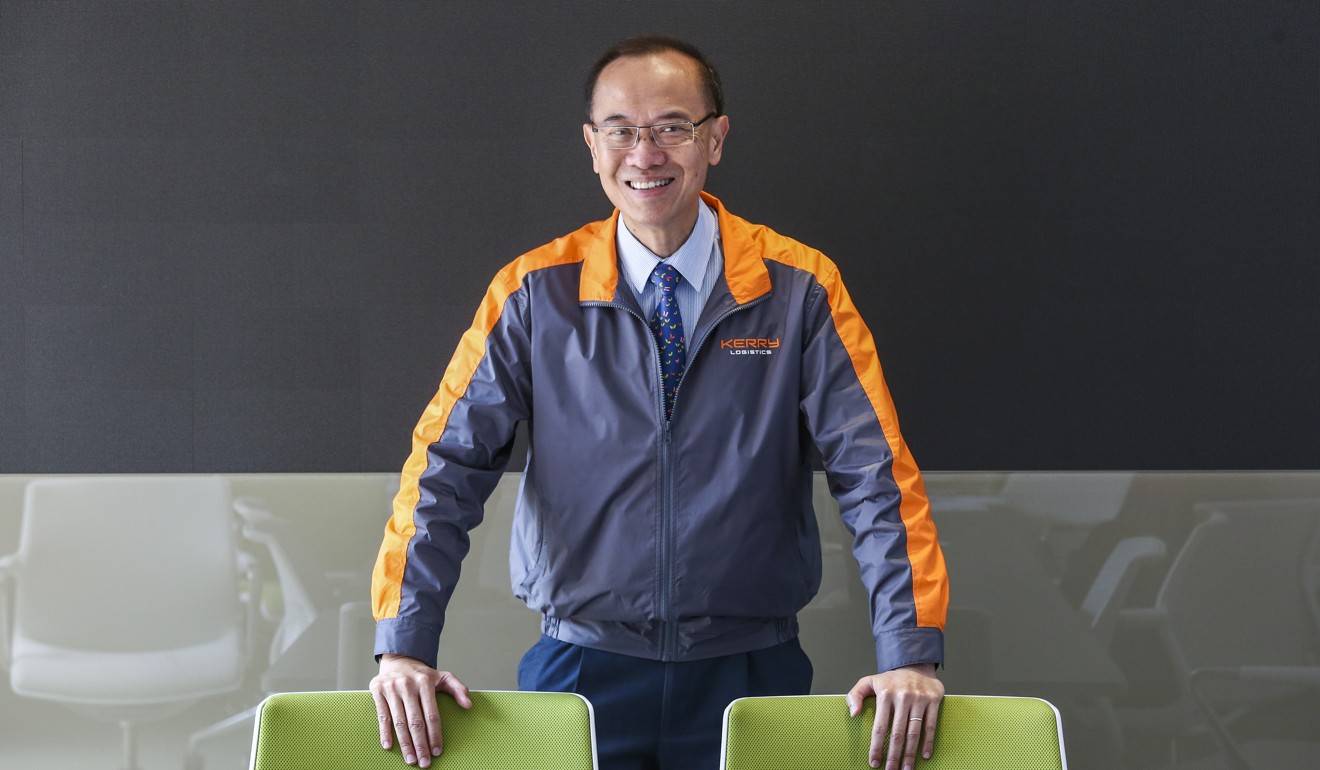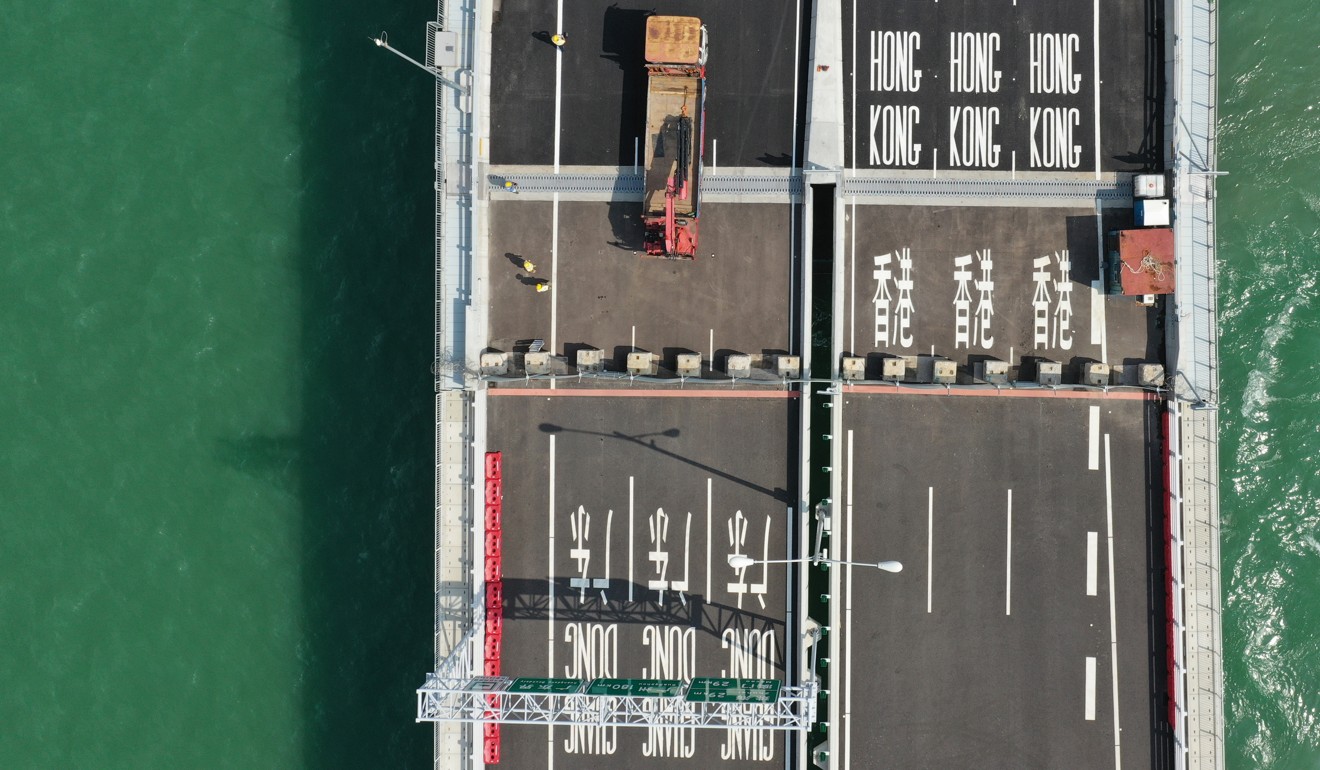
Trucks aren’t using Hong Kong-Zhuhai-Macau Bridge because rules are unclear, says Kerry Logistics chief George Yeo
- Sea crossing was touted as major part of China’s Greater Bay Area plan but commercial use remains low
- Logistics company boss says complexity of using bridge means firms are unsure whether it is cost effective to do so
Few trucks use the mega Hong Kong-Zhuhai-Macau Bridge because the rules are not clear, according to the chairman of Kerry Logistics Network George Yeo.
The former Singapore foreign minister said the company would wait for clearer rules before it decides whether to use the bridge, a key piece of infrastructure in Beijing’s “Greater Bay Area” plan to integrate Hong Kong and Macau more closely with Guangdong province.
The bridge is only one example of how a lack of detail in the State Council’s blueprint for the plan has left major businesses waiting before they respond.
“The details are very important. Right now we have the broad framework and the general idea [of the plan]. We have to go down now to the nitty gritty, to the specific details,” Yeo said.
“There is still very little cargo going across because the rules are not clearly settled with the customs authorities. I am sure it will be resolved within a few months. There are practical details about how to clear containers and where to clear them and the smoother it is the better.”

“The clearer the rules are the more the trucks that carry such containers can pass through with minimum friction.”
Since the 55km (34-mile) bridge opened for use in October last year, the low number of private cars and trucks using it has become a major talking point.
The longest sea crossing in the world cost Hong Kong HK$120 billion (US$15.3 billion) and there were high hopes that it could increase the flow of cargo between the city and the western Pearl River Delta and Guangdong and Guangxi provinces.
However, only 3,429 vehicles carrying goods used the bridge in the whole month of February. The number is far lower than 7,020 in January and 5,302 in December though it was likely a result of the long holiday during the Spring Festival, according to figures provided by the Hong Kong-Zhuhai-Macao Bridge (HZMB) Authority.
The number of private cars increased from around 45,000 per month in December and January to 55,117 in February.
The traffic is a far cry from the government projection to have 11,600 to 16,550 vehicles - including the private cars and trucks – every day on opening.
The Hong Kong government had said the bridge would shorten the distance of road travel between Zhuhai city and Kwai Chung Container Port from more than 200km to 65km and predicted the journey would take 75 minutes.
But Yeo said Kerry Logistics, which had a turnover of US$3.9 billion in 2017, had still to determine whether it would be cost effective to use the crossing.
“The moment the rules are clarified we are there. If it improves costs for our customers, we will provide the service. But if it is still too expensive, we say no,” he said.
The State Council, China’s cabinet, rolled out the Greater Bay Area blueprint in February, saying that better integration of Hong Kong and Shenzhen; Zhuhai and Macau; and Guangzhou and neighbouring cities would be the three main engines for regional development.
Beijing hopes to turn the Pearl River Delta into an economic powerhouse like Tokyo Bay or San Francisco’s bay area.
But the blueprint was short on detail about how this would be achieved and encouraged local governments to discuss how this vision would be implemented among themselves.

Yeo said: “The rules are not clear enough right now, even when they are clarified they will change from time to time.”
“My approach with Kerry logistics is: there are three poles listed in the blueprint, Hong Kong-Shenzhen, Macau-Zhuhai, Guangzhou-Foshan.
“Our strategy is to be well represented in the three poles, so depending how the rules are tweaked, movements across the boundaries will change.”
He said green customs lanes should be set up to aid cargo flow, adding that better intelligence would help prevent illegal activities such as smuggling.
He also called for the rules to be relaxed so that Hong Kong residents who were not born in Hong Kong or the mainland , such as himself, would be able to travel to other parts of the Greater Bay Area more easily.
Yeo said logistics companies had to master a series of complex customs and border rules in the Greater Bay Area if they wanted to succeed.

“We have to look at the whole GBA now as one domain and within this domain … these are complex borders and we must be experts in understanding and managing the complexity.”
“Our customers will have to decide what they put in Hong Kong, what they put in Foshan, what they put in Dongguan and what they put in Zhuhai and they have got to be linked today.
“People will have to be able to travel freely, the documentation must be simple. Different components attract different tariffs and they should be able to be transported easily.”
But he dismissed the worries that Hong Kong may lose its separate customs territory status when its economy becomes more closely integrated with the mainland’s.
Yeo said that while the city’s customs status caused some confusion since it is politically part of China, having “Hong Kong as a separate customs area is good for China but also good for the world”.

